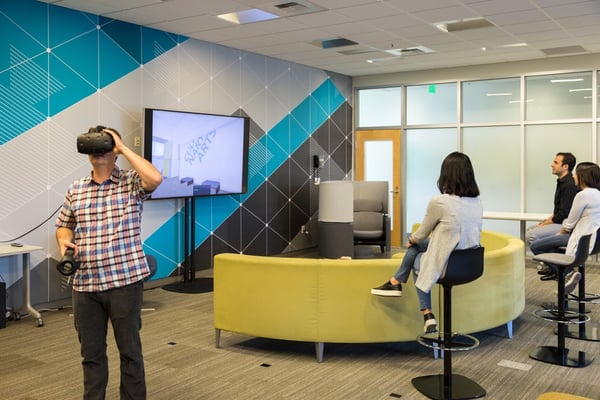This post is the first of four on how quality assurance and quality review processes can be augmented with virtual reality and immersive review.
Does your firm believe in quality?
Errors generated early on can have costly impacts on construction and engineering in the form of change orders, budget over-runs, and client distrust.
Quality is a tricky word in the built environment. As the expectations and needs of clients and stakeholders increasingly pressure architecture offices to conceptualize, design, and produce the documents that lead to a final architectural product under shorter timelines, making sure that errors don't pile up along the way is critical to the success of a project. Errors generated early on can have costly impacts on construction and engineering in the form of change orders, budget over-runs, and client distrust. In this context, setting proper expectations through a culture of quality is critical -- not just within architecture practices but throughout the vast network of collaborators that aim to deliver great work. The good news is that the concepts of Quality Assurance (QA) and Quality Control (QC) have proven useful in industries with complex deliverables and have also been in practice within architecture, engineering, and construction.
 Immersive Review at HMC Architects office with IrisVR Prospect. Image Courtesy of HMC Architects.
Immersive Review at HMC Architects office with IrisVR Prospect. Image Courtesy of HMC Architects.
An Introduction to Quality Assurance (QA) and Quality Control (QC)
The end goal for an Architecture, Engineering or Construction firm is the same as other complex industries -- to deliver a quality product that meets the needs of all necessary stakeholders.
Quality Assurance is defined in the design process by the Construction Specifications Institute (CSI) as "the procedures for guarding against defects before and during the execution of the work". In other words, it’s an ongoing process that should occur formally and informally while the design work is being done. In contrast, quality control occurs when the work is actually in a state of completion and involves "conformance with requirements.” The end goal for an Architecture, Engineering or Construction firm is the same as other complex industries -- to deliver a quality product that meets the needs of all necessary stakeholders. However, in design, Quality Assurance and Quality Control, while distinct concepts are used somewhat interchangeably. The lack of clear parameters between QA and QC points to the need for more intuitive ways to clearly integrate them into design review and for clearer definition between the two. Beginning to integrate QA and QC into the workplace will take time. It doesn't have to be perfect from day one, but as long as your team is committed to continuously improving the methods by which you assure and control quality, your efforts will compound over time.
At IrisVR, we're committed to improving the way the building industry communicates throughout the design process. By converting the 3D models your firm is already working with into navigable virtual reality experiences, your team and stakeholders no longer need to imagine the experiential and visual outcomes of design decisions -- communication is as clear as seeing the same thing.
A Guide to QA and QC with Virtual Reality
1. Quality Assurance and Control with Virtual Reality
2. Immersive Design and Immersive Review
3. Getting Started with Virtual Reality and Immersive Review
4. Implementing Immersive Review into your process
.png?width=212&name=Prospect%20by%20IrisVR%20Black%20(1).png)
